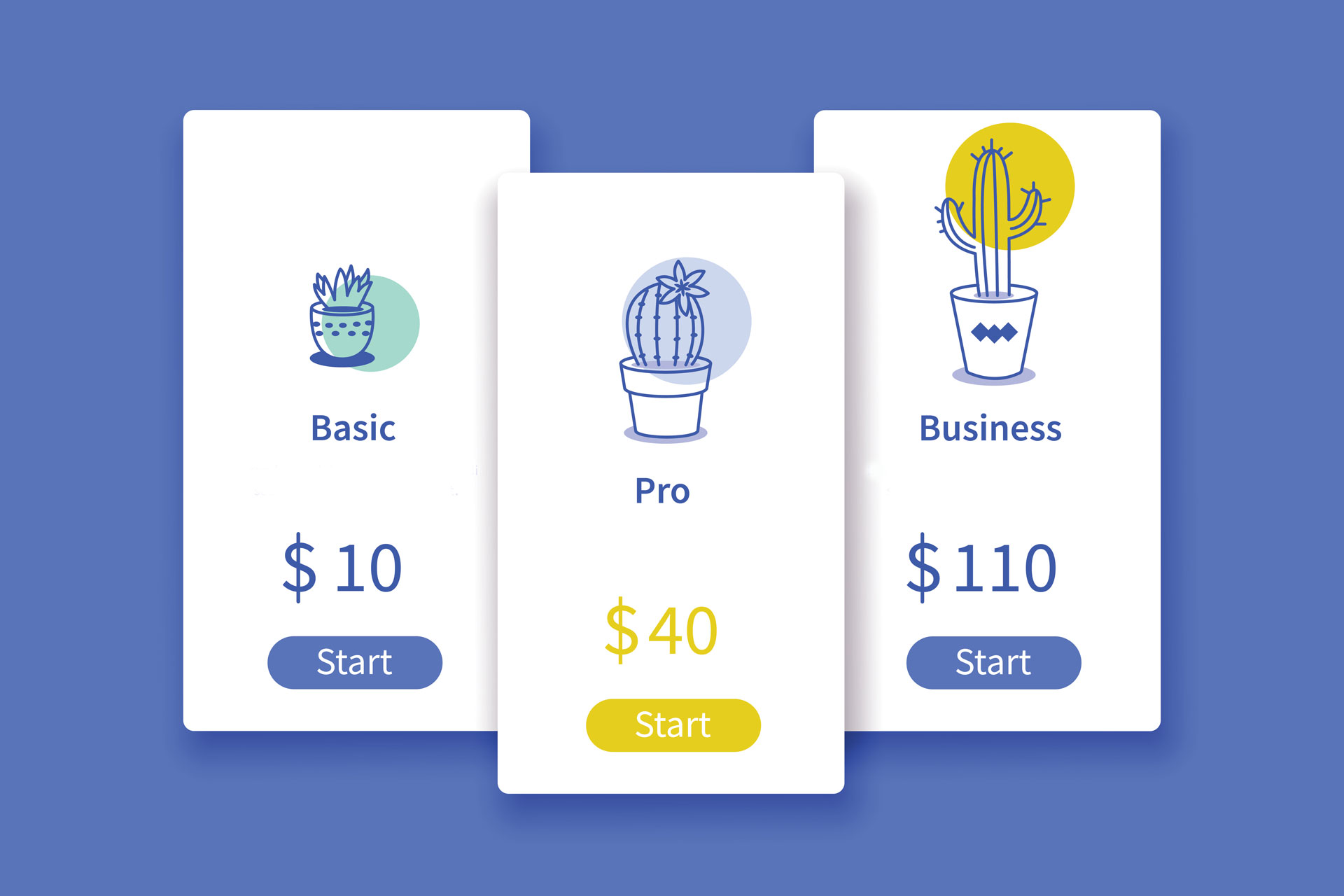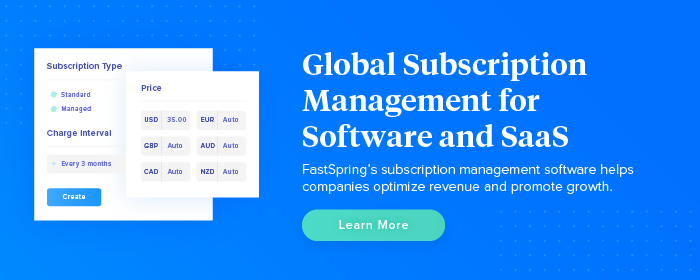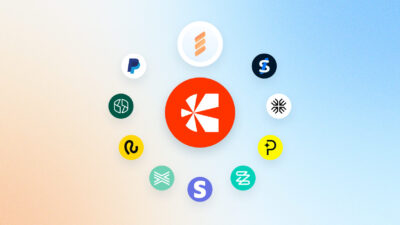Pricing your software correctly is a crucial part of selling software, but sometimes it’s hard to know if you’re on the right track with your pricing strategy. We’re sharing some tips for setting up a pricing model that attracts and retains long-term customers for your software company.
Offer a Range of Options
Everyone likes options. So a good pricing model needs to offer multiple plans to help ensure that your software company is casting a wide enough net and not excluding any potential customers.
But what, exactly, should your pricing look like?
Some experts warn against pricing based on legacy competitors. Instead, focus on mapping your pricing tiers to your buyer personas. Developing a deep understanding of your customers’ price sensitivity and pain points will better serve your pricing strategy than just outright mirroring your competitors. Just remember to periodically revisit your pricing strategy to ensure that you are optimizing your prices to keep up with your business as you grow.
Avoid Hidden Charges
Cell phone and cable companies are famous for tacking on extra fees—helping to earn them the distinction as one of the industries with poor customer satisfaction and customer service score.
Customers hate hidden fees, and charging them can be one of the quickest ways to drive them away. Regardless of whether you’re advertising a fixed priced or pay-as-you-grow pricing model, if your software company is looking to foster loyalty in your customer base, you’ll want to ensure that you set clear expectations about your pricing from the start. This way you can avoid disappointing your customers or worse, catching them off guard with additional charges and causing them to abandon your service.
The Enduring Value of Free
Think the “free trial” is cheesy? Don’t discount it too quickly. Customers are so used to free trials, they have almost come to expect it from a new service. Netflix, for example, markets free trials heavily because their data shows that they work, retaining about one in three people for a subscription. And don’t worry too much about people abusing the offer. Research shows so-called “serial trialers” account for a tiny percentage of consumers. Most people use free trials for exactly what you want them to: trying out your product. Once they’ve seen the platform or software in action, they’re more likely to continue to use your product and extend their subscription beyond the free trial period. You’d be surprised to find out just how many subscription-based models have actually seen many of their enterprise customers start out as free trials.
Benchmark Growth with Measurable Metrics
There are hundreds of ways to measure your success. Don’t get too caught up in trying to dissect all the statistics. Many successful software companies find it is best to select a small group of metrics and give them intense focus.
One of the best metrics to use as an indicator of growth is the churn rate or the percentage of customers who leave every month. Reducing churn is essential for building a solid customer base. This is why many SaaS providers select a subscription management platform that accepts multiple payment types and offers recurring billing. These features help combat churn by removing potential opportunities for customers to abandon your service.
You can also measure your average revenue per customer and determine the lifetime value (LTV) of a customer. The LTV might seem hard to determine, but it’s really just a combination of your average revenue per customer and your churn rate. Software companies calculate LTV by taking the average subscription length and multiplying it by the average monthly revenue per customer. So if your average subscription length is 12 months and your average monthly revenue per customer is $60, you’re looking at an LTV of $720.
Implement Recurring Payments
In the above example, the glaring question is: why is my customer lifetime so short? Why aren’t my customers sticking with me beyond 12 months? The most obvious answer is that 12 months is your default subscription renewal point. It’s also possible that you’re ending trial periods/pricing at 12 months, or your customers are just hooked on a 12-month cycle.
This is where implementing a recurring payment pricing model can help your company. Recurring payments will automatically renew your customer’s subscription unless the customer ends the arrangement.
Being upfront about setting up customers for recurring payments—which means asking for their explicit approval—can be an effective strategy to boost LTV and introduce a hassle-free way for your customers to keep their subscription active.
Capitalize on Cancellations
It’s only natural for SaaS companies to have to deal with customers canceling. But this doesn’t mean you should give up on these customers.
Cancellation is a golden opportunity to show your users how much you care about retaining them. This is why Amazon.com emails people who cancel Prime membership with a 50% discount offer to resubscribe. Amazon is likely looking at customer LTV, realizing it’s better to take a renewal at half price than lose the customer altogether.
Software companies can apply this strategy and boost retention in the same way. Consider creating tiered discounts for at-risk customers and reaching out at critical points. Preserving these long-term relationships with your customers is critical for scaling your software business.
Once you’re done strategizing your software’s pricing, the next step is to focus on setting up a subscription management system to help streamline your subscription process. Download our eBook, 8 Essential Subscription Management Features to help you make an informed decision.










